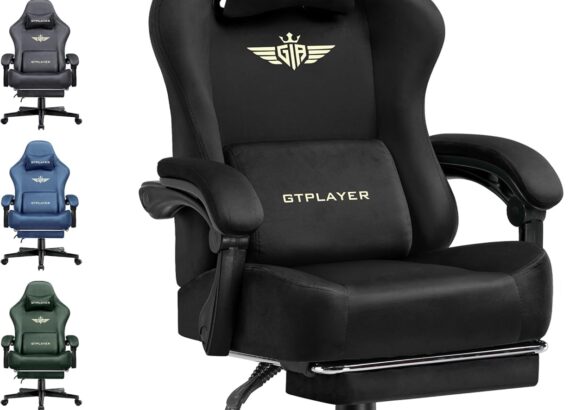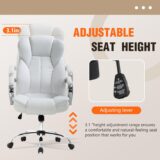At its core, a tactile learner is an individual who thrives when learning involves physical experiences. They’re the students who need to touch, move, manipulate, and engage actively with the subject matter to grasp it fully. While some people might excel at absorbing information through lectures or reading, tactile learners are at their best when they can roll up their sleeves and get hands-on.
This learning style is often referred to as “kinesthetic” because it’s all about movement and physicality. What Is A Tactile Learner are the ones who enjoy science experiments, love working with their hands, and often excel in activities that require physical coordination.
But what sets them apart from other learners? How do you recognize a tactile learner, and why is it important to cater to this unique style of learning? In the following sections, we will explore these questions in detail, shedding light on the incredible world of tactile learning.
The Basics of Tactile Learning
Tactile learning goes beyond just “doing” and actively engaging with the subject matter. It taps into the power of the physical senses, particularly touch, to create a deeper and more lasting connection to the material being learned. When tactile learners touch, feel, and manipulate objects or engage in physical activities, their sensory experiences are directly linked to the information they are absorbing. This unique approach not only aids in comprehension but also enhances long-term memory retention, allowing tactile learners to recall and apply what they’ve learned more effectively.
In the world of tactile learning, textbooks and lectures take a backseat to practical experiences and hands-on activities. For example, a tactile learner might better understand geometry by physically constructing shapes or solving problems with tangible objects, as opposed to simply reading about the concepts. In science, they might thrive in environments where experiments and interactive demonstrations are part of the curriculum, as these activities cater to their natural inclinations.
In essence, tactile learning transforms the educational journey into a sensory-rich adventure where every touch, movement, and interaction deepens the understanding of the subject matter. Recognizing the importance of these sensory experiences is vital for educators seeking to create effective learning environments for tactile learners.

Identifying a Tactile Learner
Tactile learners possess a distinct set of characteristics that set them apart from other learning styles. Recognizing these traits is crucial for educators, parents, and even the learners themselves to identify and cater to the unique needs of tactile learning. Here are some key characteristics that help in identifying a tactile learner:
Physical Activity Enthusiasts: Tactile learners are often drawn to physical activities and are generally more physically active. They may enjoy sports, dance, or activities that involve movement and coordination.
Hands-On Approach: These learners prefer to get their hands dirty, so to speak. They excel when they can engage with the subject matter through touch, manipulation, and direct interaction. This hands-on approach helps them understand and remember concepts more effectively.
Short Attention Spans for Passive Learning: Tactile learners may struggle with passive learning methods, like long lectures or reading textbooks without interactive elements. Their attention tends to wane in such settings, but it soars when they can actively participate.
Improved Learning Through Movement: For a tactile learner, learning is often synonymous with movement. They might find it easier to remember information when they can associate it with physical actions or gestures.
Strong Spatial and Body Awareness: Tactile learners often have a keen sense of spatial relationships and body awareness. This heightened awareness can be an asset in subjects that involve geometry, physical education, or even dance.
Excellent Problem Solvers: Thanks to their interactive and hands-on approach, tactile learners tend to be excellent problem solvers. They have the ability to figure things out by actively engaging with the challenges they encounter.
Identifying these characteristics in a learner can be instrumental in tailoring the educational approach to suit their needs. Acknowledging and embracing their unique learning style can significantly enhance their educational experience and overall academic success.
The Benefits of Tactile Learning
Tactile learning, with its emphasis on hands-on experiences and physical engagement, offers a multitude of advantages for both learners and educators. Understanding and harnessing these benefits can lead to more effective and enjoyable educational experiences. Here are some of the key advantages of tactile learning:
Enhanced Engagement: Tactile learning actively engages students in the learning process. When learners can touch, manipulate, and experiment with the subject matter, they become more engrossed and enthusiastic about learning. This active involvement makes the educational journey enjoyable and memorable.
Improved Retention: Studies have shown that tactile learners tend to retain information more effectively because they associate their learning with sensory experiences. When they physically engage with the subject matter, it creates a deeper connection that leads to better long-term memory and understanding.
Problem-Solving Skills: Tactile learners, thanks to their hands-on approach, develop strong problem-solving skills. Their interactive learning style frequently exposes them to real-world scenarios, enhancing their critical thinking abilities and adaptability.
By recognizing and capitalizing on these benefits, educators can create a learning environment that maximizes the potential of tactile learners. It’s not just a learning style; it’s a pathway to enriched education that caters to the diverse needs of students and empowers them to succeed.
Tactile Learning in Practice
Incorporating tactile learning into educational practices involves a shift from traditional teaching methods, focusing on engagement and physical interaction. To create an effective tactile learning environment, educators can employ various strategies and tools to cater to the needs of tactile learners. These strategies include the integration of hands-on activities, experiments, and movement into lessons.
For instance, in science classes, experiments and practical demonstrations can be pivotal in helping tactile learners understand complex concepts. In mathematics, the use of manipulatives like blocks or counters can turn abstract mathematical ideas into tangible and comprehensible realities. Additionally, art, music, and physical education classes naturally align with the tactile learning style, providing opportunities for students to engage with their preferred mode of learning.
Interactive technology and educational games can also play a significant role in bringing tactile learning to the forefront, as they allow students to interact with educational content in an immersive and engaging manner. By embracing these practices, educators can create a rich and dynamic learning environment that benefits not only tactile learners but all students, promoting a more well-rounded and effective approach to education.
Challenges Faced by Tactile Learners
While tactile learning offers numerous advantages, it’s not without its challenges, particularly in traditional educational settings that predominantly prioritize visual and auditory teaching methods. Tactile learners may encounter the following challenges:
Lack of Hands-On Opportunities: Traditional classrooms may not always provide ample opportunities for hands-on learning. Tactile learners may struggle to fully engage with subjects that heavily rely on lectures and passive activities.
Difficulty in Sustained Attention: Tactile learners can find it challenging to sit still and focus for extended periods, which can be required in conventional classroom settings. Their need for movement and interaction may lead to restlessness or distractions.
Limited Access to Learning Resources: Not all educational institutions have the resources or materials necessary to support tactile learning. This can limit the exposure of tactile learners to hands-on experiences.
Recognizing these challenges is a critical step in addressing the needs of tactile learners. By implementing more inclusive teaching practices and incorporating hands-on elements, educators can help tactile learners thrive and reach their full potential in the educational journey.
Conclusion
In a world where diversity is celebrated and where every student is unique, understanding the remarkable qualities of tactile learners is paramount for educators and learners alike. Tactile learning, with its focus on physical experiences and active engagement, offers a gateway to more effective and enjoyable education. It enriches the learning process, enhances retention, and fosters problem-solving skills.
Recognizing and embracing the characteristics of tactile learners, such as their love for hands-on activities and their need for physical interaction, can lead to an educational environment that caters to their distinctive needs. By doing so, educators not only help tactile learners succeed but also create a more inclusive and dynamic classroom that benefits all students. Tactile learning is more than just a learning style; it’s a pathway to a holistic and enriched education that acknowledges the incredible diversity of learners in our world.







